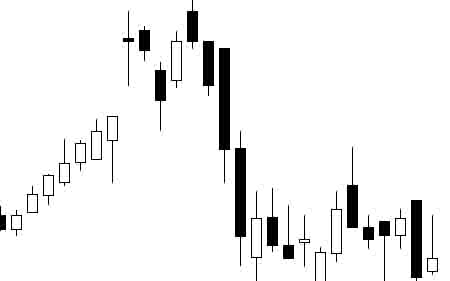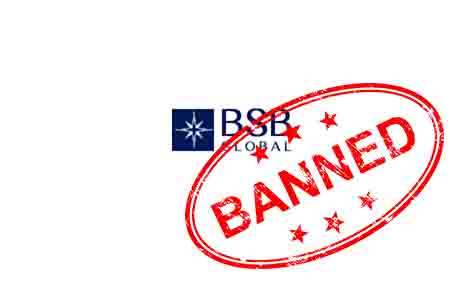About realized and unrealized gains and losses.
 Paul Roberts
26 / April / 22
Visitors: 653
Paul Roberts
26 / April / 22
Visitors: 653
When a company headquartered in a certain country makes a transaction with a company located in another country (abroad) using a currency other than its local currency, the settlement of this transaction necessarily implies a currency exchange consisting in converting one currency into another. Depending on the applicable exchange rate, such a conversion may bring profit or loss (in the exchange rate).
This section discusses both realized and unrealized exchange gains and losses.
Realized losses and exchange gains.
Realized exchange gains and losses may arise when a partial or full payment is included in the amount of an invoice or an expense part.
Note: Gains and losses are calculated for each amount paid, and not for the remaining balance to be paid on the invoice or the expenditure part.
The balance is paid in full.
In the following example, the settlement of transactions was made by cash payment. Consequently, the foreign exchange gain or loss was realized and recognized from the accounting point of view at the date of receipt of payment.
For example: an American company that buys goods from a British company that requires payment in pounds sterling must exchange dollars ($) for pounds (£) to pay for the transaction. Such conversion of one currency into another requires the use of an exchange rate. If an American company purchased goods from a British company as of June 1 for a total of 1,000 pounds sterling, whereas a pound was worth $ 1.40 on that date, it will have to exchange 1,400 dollars for 1,000 pounds sterling to pay for the purchase.
Note: The exchange rate used here is only an approximate value and does not reflect the current exchange rate.
Since the American company maintains accounting records in US dollars, the transaction is recorded as follows:
- The specified amount of purchases as of June 1, 1400 cash register 1400.
- Payment of Invoice No. 1725 issued by Sterling Co.
- 1,000 pounds sterling, exchange rate: $1.40 per pound.
Suppose, for example, that on July 10, this American company made a purchase in the amount of 100,000 yen from a Japanese company, and on that date the exchange rate was 0.004 dollars per 1 yen. since the American company keeps accounting records in dollars, this purchase is registered for a certain amount. from 400 USD (or 100,000 yen x 0.004 USD) as follows :
- The designated purchase amount as of July 10 is 400 supplier accounts - Mr. Suzuki 400.
- 100,000 yen, exchange rate: 0.004 dollars per yen.
Now let's assume that on the payment date, that is, August 9, the exchange rate rose to $0.005 per 1 yen, then the amount of 100,000 yen registered in the accounting of suppliers should be paid by exchanging $500 (100,000 yen x 0.005 USD) for 100,000 yen. In this case, the American company incurs a foreign exchange loss of $100, since it needs to pay $500 to repay a debt of $400 (supplier's accounts). Cash payment will be registered as follows :
- Nominal amount August 9 accounts payable-Mr. Suzuki 400 foreign exchange loss 100 credit fund 500.
- Cash payment on account No. 823.
- 100,000 yen, or $400, current exchange rate: $0.005 per 1 yen.
All transactions with foreign companies can be analyzed in the same way as we did in the previous examples. Suppose, for example, that on May 1, when the exchange rate of the dollar to the euro was 0.25 dollars for 1 euro (euro), an American company registered a sale of a French company in the amount of $ 1,000 and billed for this sale in euros (or 4,000 euros). This transaction will be recorded as follows :
- The amount as of May 1 of the customer account-Crusoe Co.1000 sales 1000.
- 4000 euros, exchange rate: 0.25 dollars per euro.
Now let's assume that as of May 31, that is, on the date of receipt of the cash payment, the exchange rate rose to $ 0.30 per 1 euro, after which the American company received a foreign exchange profit of $ 200. The prize was received due to the fact that at the date of sale all 4000 euros were worth 1000 US dollars and cost 1200 US dollars (or 4000 euros * 0.30 US dollars) as of May 31, the date of receipt of payment. Then the cash payment will be registered as follows :
- Cash amount May 31 money transfer 1200 customer accounts - Crusoe Co. 1000 Exchange rate profit 200.
- Receiving a cash payment on account No. 7782.
- 4000 euros or 1000 US dollars, exchange rate: 0.30 dollars per euro.
- Partial payments.
If the balance is not paid in full, the system calculates exchange gains and losses on each payment, and not on the amount of the remaining debt on the account or the expenditure part. The profit or loss from currency conversion is recorded only if payments are accounted for on registered accounts. The system uses the following formula to perform this calculation :
Profit/loss amount = (payment/average exchange rate) - (payment/payment exchange rate)
Average invoice exchange rate = remaining amount due in foreign currency / remaining amount due in local currency.
Take, for example, a German company that buys goods from an American company, which it pays in euros (euros). Then the American company must exchange these euros for dollars to settle this transaction. In this example, a German company pays its debt through multiple payments rather than a single payment. This transaction will be recorded as follows :
Amount in foreign currency (Euro) exchange rate amount in local currency (US dollar) Notes Invoice No. 101 1100,00 2000 550,00 availability 201 200,00 4000 50,00 Profit/loss currency 50,00 = (200,00/2,00) - (200,00/4,00) = 50,00 loss payment 301 600,00 3000 200,00 Profit/loss currency 100,00 = (600,00/2,00) - (600,00/3,00) = 100,00 loss payment 302 300.00 3000 100.00 Profit/loss currency 50,00 = (300,00/2,00) - (300,00/3,00) = 50,00 loss.
Unrealized foreign exchange losses and gains.
However, if the financial statements are prepared between the date of the initial transaction (for example, purchase or sale) and the date of receipt of a cash payment or cash payment, and if the exchange rate has changed during this period, the exchange rate gain or loss will change. the results obtained should be reflected in these financial statements.
Suppose, for example, that on December 20, a sale in the amount of $1,000 was made in a German company, when the exchange rate was $0.50 for 1 euro (euro), and this transaction was registered as follows :
- Nominal amount on December 20 on customer accounts-Mueller Co. 1000 sales 1000.
- 2000 euros ; exchange rate: 0.50 dollars per euro.
Assuming that the exchange rate rose to $0.45 per 1 euro on December 31, at the date of termination of the balance sheet, $1,000 registered in the accounting of customers will then be worth only $900 (or 2000 euros x $0.45).). This "unrealized" currency loss will then be recorded as follows :
- The formulation of the Sum of Dec. 31 Loss of currency, for 100 Accounts - Mueller Co. 100.
- Reduction of the exchange rate by 2000 euros x 0.05 dollars.
- Now let's assume that 2000 euros will be received on January 19 next year, when the exchange rate rose to 0.42 dollars, a further decline in the exchange rate from 0.44 to 0.42 dollars per euro is expected. Then the receipt of this cash payment will be registered as follows :
- Nominal amount January 19 cash amount 840 currency loss (0.03 US dollars X 2000 euros) 60 customer accounts-Mueller Co. 900.
- Receiving a cash payment on account No. 22.
- 2000 euros or 840 US dollars, exchange rate: 0.42 dollars per euro.
If the exchange rate had increased in the period from December 31 to January 19, the exchange rate gain would have been recorded on January 19. For example, if this exchange rate increased from $0.45 per 1 euro to $0.47 per 1 euro during this period, the credited Exchange Rate profit would be $40 (or $0.02 x 2000 euros).
Consolidated financial statements, including foreign subsidiaries.
Before proceeding with the consolidation of the financial statements of local companies and foreign subsidiaries, the amounts indicated in the financial statements of these companies must be converted into local currency. The amounts reflected in the liabilities and assets of each foreign subsidiary are usually converted into local currency based on the exchange rate in effect at the closing date of the balance sheet. Receipts and expenses are, in principle, recalculated based on the exchange rate in effect at the date of these transactions. (For practical reasons, the weighted average exchange rate for the entire fiscal year is usually used). Adjustments (gains or losses) resulting from the conversion are recorded as a separate entry in the capital section of the balance sheet of foreign subsidiaries.
After the financial statements of foreign subsidiaries have been converted into local currency, consolidation of these reports and reports of local companies is carried out in the usual way. For more information, see In the consolidation section-General information.
We have compiled a complete Bad Reputation Brokers.

Paul Roberts
Paul Roberts 51 years old Born in Edinburgh. Married. Studied at University of Oxford, Department of Public Policy and Social Work. Graduated in 1997. Works at Standard Life Aberdeen plc.






